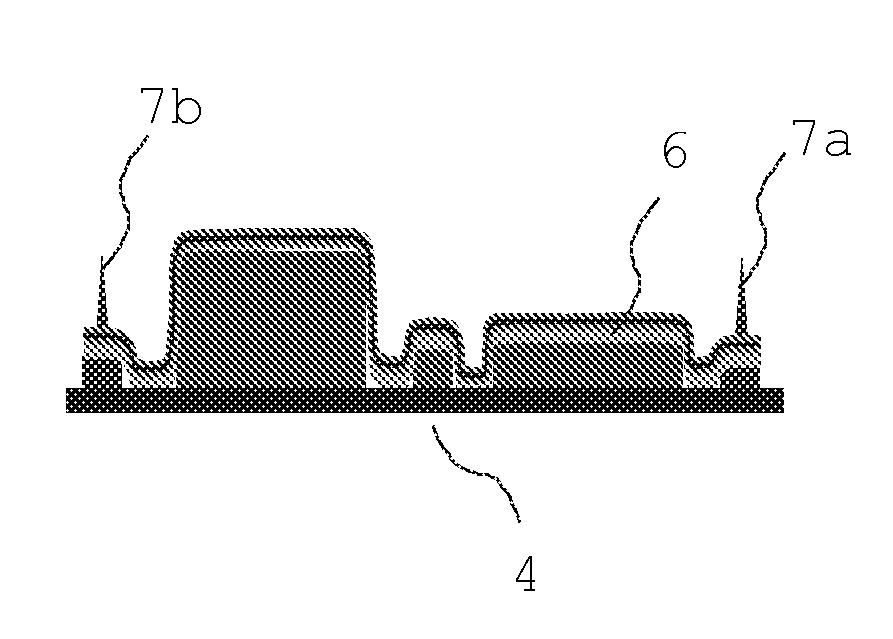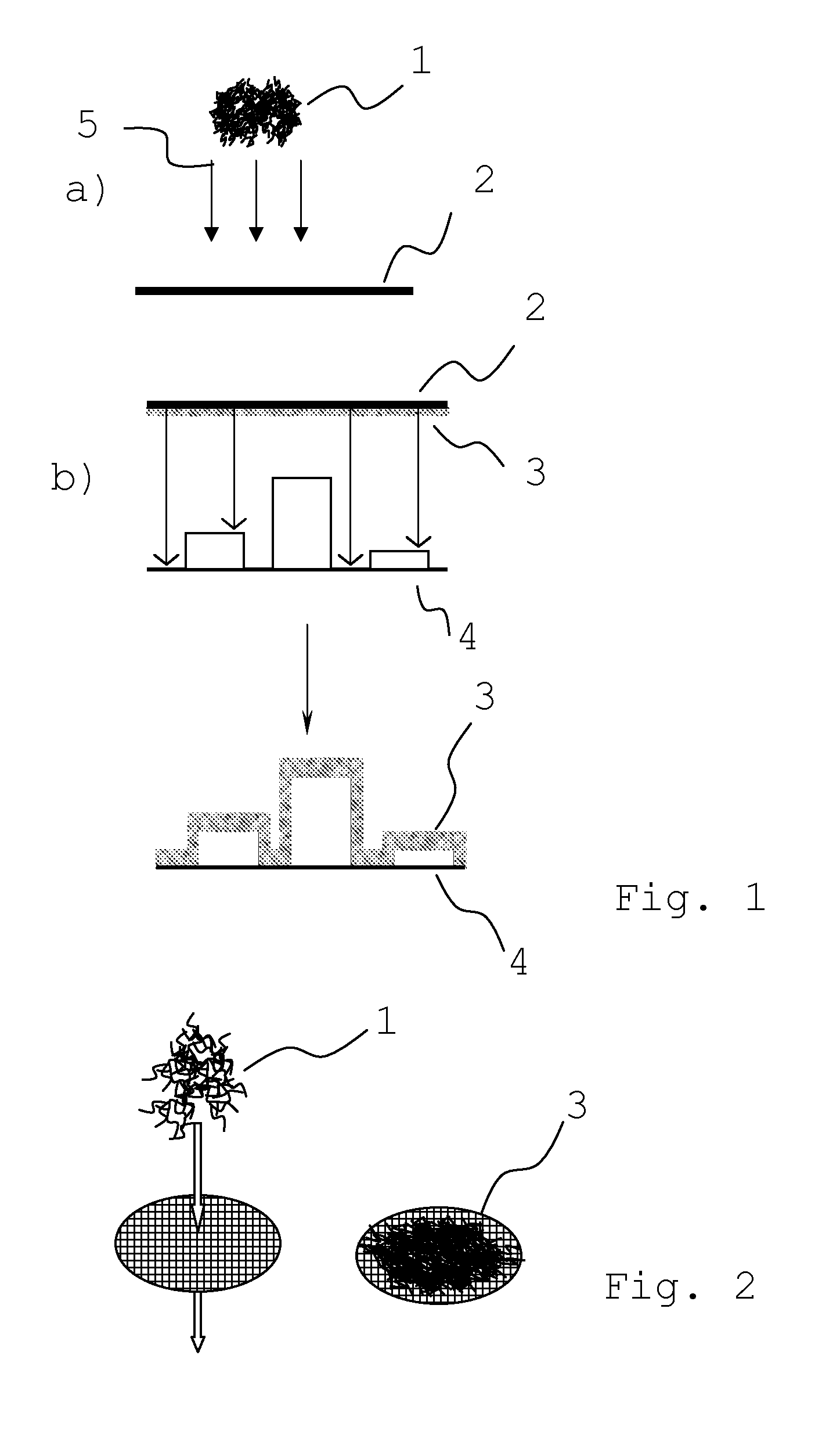Method for the production of a conformal element, a conformal element and uses of the same
a technology of conformal elements and production methods, applied in the direction of sustainable manufacturing/processing, tactile signalling systems, instruments, etc., can solve the problems of non-uniform shielding performance, affecting the effective performance of the circuit, and affecting the effect of the shielding performance, so as to achieve the effect of broadening the scope of applications
- Summary
- Abstract
- Description
- Claims
- Application Information
AI Technical Summary
Benefits of technology
Problems solved by technology
Method used
Image
Examples
example 1
[0098]As an example of how to deposit a network of HARM-structures onto the formable substrate, thus forming an formable element, according to one embodiment of the present invention, SWCNTs (single walled carbon nanotubes) were synthesized in an aerosol laminar flow (floating catalyst) reactor using carbon monoxide and ferrocene as a carbon source and a catalyst precursor, respectively.
[0099]SWCNTs were then collected directly from the gas phase downstream of the reactor by filtering through a 2.45 cm diameter nitrocellulose (or silver) disk filter (Millipore Corp, USA). The filter, in this embodiment, takes the role of a formable substrate. The deposition temperature on the filter surface was measured to be 45° C. The layer thickness of SWCNT networks formed on the substrate was controlled by the deposition time, which could be altered from a few seconds to several hours depending on the desired network thickness. Measurement results showed that the deposits were randomly oriented...
example 2
[0101]In accordance with the present invention a structure, for example, to be shielded against electromagnetic radiation can comprise an element comprising a multilayer structure arranged in a conformal manner onto said structure. The multilayer structure can comprise a number of networks of HARM-structures sandwiched between, for example, a number of polymer substrates, to enhance the shielding compared to a single network of HARM-structures. Said multilayer element can for example comprise a second network of HARM-structures on top of a first polymer substrate having thereon arranged a first network of HARM-structures on the other side against the structure to be shielded. This multilayer element comprises thus a first network of HARM-structures on one side of the first polymer substrate and the second network of HARM-structures on the other side of the first polymer substrate. On the second network of HARM-structures can further be a second polymer substrate, in which case the s...
example 3
[0103]In accordance with the present invention a thermoacoustic speaker is manufactured, in which a conductive network of HARM-structures on a PET substrate is thermocompressed over a compound curved glass surface. Electrodes are attached and the speaker is attached to an output jack of an amplifier to drive the speaker.
PUM
| Property | Measurement | Unit |
|---|---|---|
| transparent | aaaaa | aaaaa |
| transparent | aaaaa | aaaaa |
| transparent | aaaaa | aaaaa |
Abstract
Description
Claims
Application Information
 Login to View More
Login to View More - R&D
- Intellectual Property
- Life Sciences
- Materials
- Tech Scout
- Unparalleled Data Quality
- Higher Quality Content
- 60% Fewer Hallucinations
Browse by: Latest US Patents, China's latest patents, Technical Efficacy Thesaurus, Application Domain, Technology Topic, Popular Technical Reports.
© 2025 PatSnap. All rights reserved.Legal|Privacy policy|Modern Slavery Act Transparency Statement|Sitemap|About US| Contact US: help@patsnap.com



